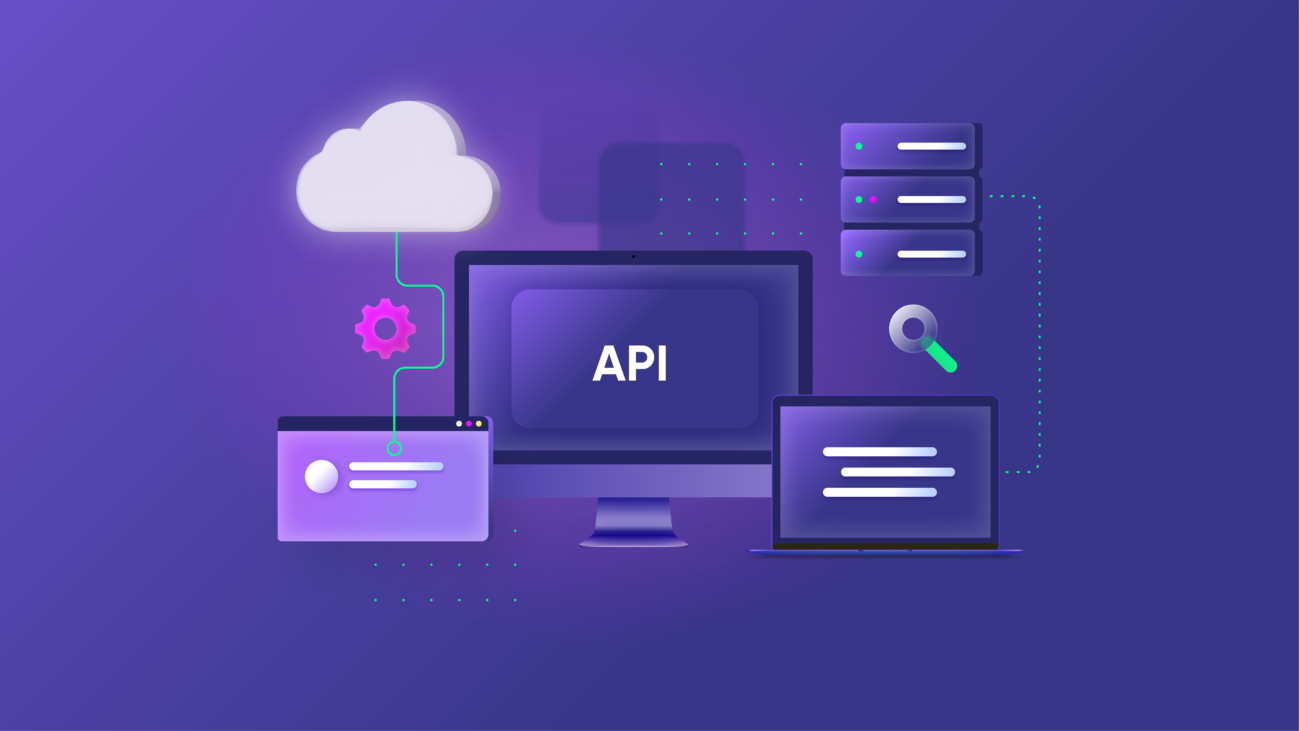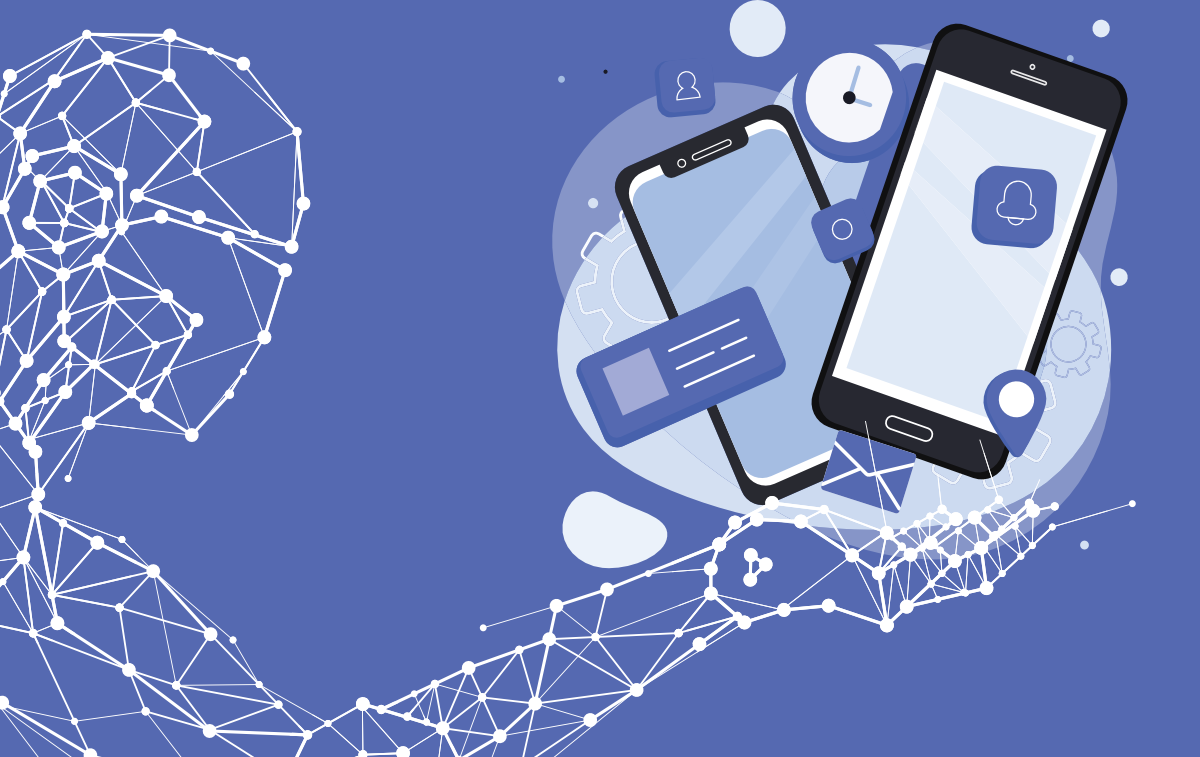Modern, constantly evolving technology, which can be difficult to keep up with, defines the digital world. Understanding how third-party API integration functions and what it can achieve for your mobile app is crucial for business owners who want to stay ahead of the curve. You’ll have access to a plethora of benefits, including more functionality, scalability, lower development costs, and enhanced user experience after you get the fundamentals of APIs and how to integrate them into your application. An in-depth discussion of the benefits of correctly integrating third-party APIs into your mobile app will be provided in this blog article.
Important Justifications for Third-Party API Integrations in Mobile App Development
Third-party API interfaces should be seriously taken into account while developing mobile applications. Your app will gain advantages from these types of integrations that set it apart from the competition. For customers to swiftly and securely buy goods and services on your app, you can easily integrate payment processing features.
Additionally, syncing client data across several systems is extremely simple by linking with other well-known apps and software platforms like Salesforce or MailChimp. Last but not least, for a better user experience, your app automatically integrates with native mobile phone functions like the camera, speech recognition, accessibility settings, and more through a third-party API connection. To create a successful mobile application that satisfies users’ expectations and stands out from rivals, third-party API integrations are crucial.
Here are some additional benefits that businesses experience as a result of integrating third-party APIs.
Functional Improvements
Mobile applications that integrate third-party APIs might offer extra features and capabilities that would otherwise be impossible or challenging to implement. These integrations can increase an app’s functionality by offering real-time data, geolocation services, payment processing, analytics, and other features.
Saving Money
Businesses can save infrastructure costs by utilizing existing resources rather than creating them from scratch by using third-party APIs for mobile app development. Because costly development cycles are not required, time and money are saved. The cost benefits connected with this strategy are further enhanced by the fact that many third-party services provide free plans or discounted prices when making large purchases.
Shorter development times
Since they do not have to spend time developing all the front-end and back-end settings necessary for digital integration procedures, third-party APIs let developers build applications more quickly. This aids in cutting down on development times and accelerating product release.
Security
The fact that these external services typically handle any authentication processes required for user access control and data encryption procedures benefits users by enhancing security levels. Additionally, this strategy frees up internal resources to concentrate on other tasks while still offering users increased levels of protection against harmful cyber threats like phishing attacks, malware infections, and other security risks related to current online activities.
Major API Integration Types
When developing mobile apps, incorporating third-party APIs can create a variety of opportunities and features to improve the user experience. Data storage, payment options, social networking, analytics, authentication and authorization processes, push alerts, mapping capabilities, and other services are examples of common API integrations.
Data Retention
User data can be kept in a third-party cloud storage system (like Amazon S3 or Google Cloud Storage) for rapid access across various devices and as a backup in case of lost or broken hardware. Additionally, it makes room on users’ personal mobile devices for additional apps or activities.
Financial Services
Developers can simply collect payments within their app by integrating with an external payment gateway (like PayPal or Stripe). Payment gateways provide for safe transactions that follow the most recent banking industry guidelines. They frequently offer simple customization capabilities, including the ability to embed forms right into the app or let users use Apple Pay or Google Pay to pay using their pre-existing accounts.
on social media
Users’ accounts can be connected to well-known social networking platforms (like Facebook, Twitter, or Instagram) to facilitate a seamless login process and enable speedy content sharing. Users are more likely to remain loyal to a brand when there are tighter ties between the app and limited-edition content.
Analytics
In order to better understand how users engage with their apps and to make decisions regarding updates or modifications based on current usage data, developers can analyze user activity within their apps by connecting with an analytics provider (such as Mixpanel or Google Analytics). Developers may track user demographics like age ranges and geography distributions, estimate retention rates, pinpoint which features are most (or least) used, discover where users stall in workflows, evaluate the success of campaigns and promotions, and do much more with the help of these services.
Authorization and Authentication Mechanisms
Authenticating users using third-party sources like Facebook login or Google sign-in is one of the most popular applications for API connections. This makes it easier for users to gain access quickly without having to remember yet another password combination each time they use an app while still protecting user data. In addition to authentication techniques, APIs can be used to authorize users’ access levels by administrator requirements. For instance, limiting the capabilities that a user of the free version will have in comparison to paying customers who have full access privileges.
Messaging & Push Notification Services
The ability to deliver timely alerts regarding new material modifications is another practical feature made possible by API connectivity. Breaking news can come from a publication’s website, be delivered directly to users via push notifications via messaging services like Twilio SMS API integration, or be communicated through chatbots using platforms like Wit AI’s natural language processing engine.
Functionality Map
For companies delivering location-based goods and services, like ride-hailing apps like Uber and food delivery platforms like DoorDash, including mapping functions within an app offers significant value. Developers can provide precise directions and make use of geofencing features by putting this kind of integration in place.
Apps may offer a more beneficial experience for users while streamlining the overall process and increasing efficiency from creation to deployment by incorporating third-party APIs into mobile app development. Through the use of API connectors, developers can simply add robust features to their apps without having to write proprietary code or design entirely new infrastructure from the start. In the end, this helps save money and time by eliminating the need to develop each feature separately while granting customers access to information, services, and technology they might not otherwise have.
Frequently Used Third-Party API Integrations for Mobile Apps
Because so many solutions purport to provide the same thing, selecting an appropriate third-party API can be challenging. For the majority of practical applications, it’s difficult to surpass the tried-and-true Google Maps APIs, nevertheless. They offer a comprehensive solution that is simple to use and trustworthy, with features like identifying precise geographical coordinates, charting unique routes, and developing intuitive interfaces with their embedded maps. Its features have also been added to various software programs and websites, making it one of the most well-liked APIs. A credit card is all that is required to create an account with Google and start enjoying its services, in addition to its extensive features and global reach. You may want to think about the following additional top API integrations for your mobile app:
Facebook API
The widely used social network’s API for Facebook makes it simple for developers to link their products with it. Users can log in and access different functions within an app, such as sharing content or making purchases, by using their pre-existing Facebook profiles. Additionally, a variety of information from the social network, including user profiles and buddy lists, can be accessed through the API.
Twitter API
The Twitter API can be used to connect a program to a well-known social network, just like the Facebook API. This API, however, goes even further by enabling developers to send messages to specific people or huge groups directly from their apps. In addition to promoting content and increasing app usage, this can send alerts or notifications.
PayPal API
Developers can easily incorporate payment functionality into their applications without starting from scratch by using the PayPal API. Users can securely make purchases using their current PayPal accounts and handle payments for goods and services with the help of this API.
Stripe API
With the help of the Stripe API, users can send and receive digital payments securely from any location in the world. As a result, developers won’t have to worry about configuring their payment gateways or gathering private consumer information. Instead, they can easily and securely process transactions and manage payments using the Stripe API.
Firebase API
Developers have access to a comprehensive set of tools through the Firebase API to create scalable, dependable, and secure real-time mobile applications. It is a cloud-based platform with real-time data syncing, storage, authentication, and other features. It can also be used to quickly handle payments, store data, and photos, and manage user IDs. Because of this, developers can quickly create intricate mobile apps using the Firebase API without having to worry about server-side infrastructure.
API for the Apple Push Notification Service
Developers can deliver notifications and messages directly to iOS devices of consumers by using the Apple Push Notification Service API. This can notify users of any new information that has to be provided to them, such as updates, special offers, or new content. The API also enables developers to simply track delivery rates and control their push alerts.
API for Google Cloud Messaging
Developers may easily transmit and receive data from their apps to the cloud using the Google Cloud Messaging API. As a result, developers won’t have to worry about juggling several connections or resolving compatibility concerns while sharing data between different gadgets like smartphones and tablets. Similar to the Apple Push Notification Service API, it also enables developers to deliver alerts or messages straight to consumers’ devices.
SMS API for Twilio
Utilizing texting or calling features supported by Twilio’s communications infrastructure, you can integrate real-time communication capabilities into your app using this API.
SDKs for AWS mobile
Numerous APIs and SDKs are provided by Amazon Web Services, allowing mobile app developers to swiftly build serverless and cloud-connected applications while utilizing AWS’s platform for storage, analytics, security, and processing power.
APIs for Flurry Analytics & Advertising
In addition to offering options to implement targeted advertising inside the app ecosystem coupled with Flurry’s open marketplace of advertisers looking for ad space across pertinent apps, these APIs offer in-depth statistics of how users engage with an app.
SDK for Google AdMob Ads
a simple method of revenue generation that lets developers of native iOS or Android applications show advertising through Google’s huge advertiser network.
How Do You Pick the Best Third-Party API for Your App?
- Recognize Your Objectives – Specify the necessary functionality, consider potential APIs, and assess the tool’s potential.
- Check Compatibility – See what platforms, data formats, authentication strategies, etc. the API supports.
Check for Security Features – Make sure any third-party APIs your app utilizes have security features to shield user data and your application from malicious attacks or service interruptions.
- Test Performance – Before incorporating an API request into the app coding, use performance testing tools to examine how quickly each call is processed and whether there are any potential latency concerns.
- Take into account pricing and licensing models. When contemplating 3rd party APIs, there may be a cost involved, either upfront or by regular payments over time.
- Evaluate the quality of the documentation – Developers should be able to properly integrate the product’s essential features into their applications if the documentation clearly explains how to use the product.
- Recognize Data Ownership & Usage Rights – Confirm that you have full authorization to use the data that the API is providing. Understand any limitations on how you can use or store such data as well.
- Have a Plan for Updates – Since APIs are frequently updated with new features and bug fixes, it’s crucial to make sure your app can handle these changes without impairing service or the user experience.
- Test, Monitor, and Maintain – After the integration is finished, thoroughly test the API and deploy monitoring tools to find any issues before they get out of hand.
How Do I Include Third-Party APIs In Mobile Apps?
The following list of five best practices for third-party API integration into mobile apps includes:
Select the Correct API
You must decide which third-party API best satisfies your unique needs before choosing it for your mobile app. Think about the features and capabilities each API offers, including price structures and data formats, as well as the kinds of calls you will be making in your application. You should also look over any authentication specifications for sending queries to the chosen API.
Making Use of Development Tools
Use any development tools offered by the service provider once you have selected an acceptable third-party API for your application. To help you get started quickly and better understand how to perform successful API requests, these tools typically offer helpful code samples. Many also come with testing tools that let programmers validate their implementation before releasing it into the wild.
Adjust Your App
By correctly configuring authentication utilizing credentials like OAuth tokens or API keys, you must guarantee that all communication between your application and the third-party service is secure. To ensure that requests are made properly and that their APIs are not overloaded, you must also keep note of any rate limits established by each service, if appropriate.
Connect Your Backend to Services
To save temporary data from user queries or update databases depending on responses from external services, integration with a backend system is required after setting your app with correct authentication and rate-limiting protocols. This layer assists in ensuring consistency between what is displayed to the user and what is occurring in real time on both ends of the connection.
Examine Your Implementation
Before making new features powered by third-party APIs available to users through your application in production mode, testing is crucial. It’s crucial to examine every step of the flow, from authorization and authentication through any additional interactions between two systems. While maintaining better levels of security during each stage of integration testing and deployment cycles, will ensure smooth integration across all components involved.
Conclusion
In conclusion, companies need to incorporate external APIs for a more automated and effective workflow. Managers and developers can select the finest API for their businesses by carefully examining the existing ones. A good integration process also requires constant monitoring. It’s important to keep in mind how patches and upgrades may impact how data is exchanged between two systems.
Getting professional advice from a seasoned organization would be helpful whether you’re completely new to API integrations or an old hand in this area. Despite this, your organization must be certain that an API integration satisfies all of its particular needs and functions as planned.




